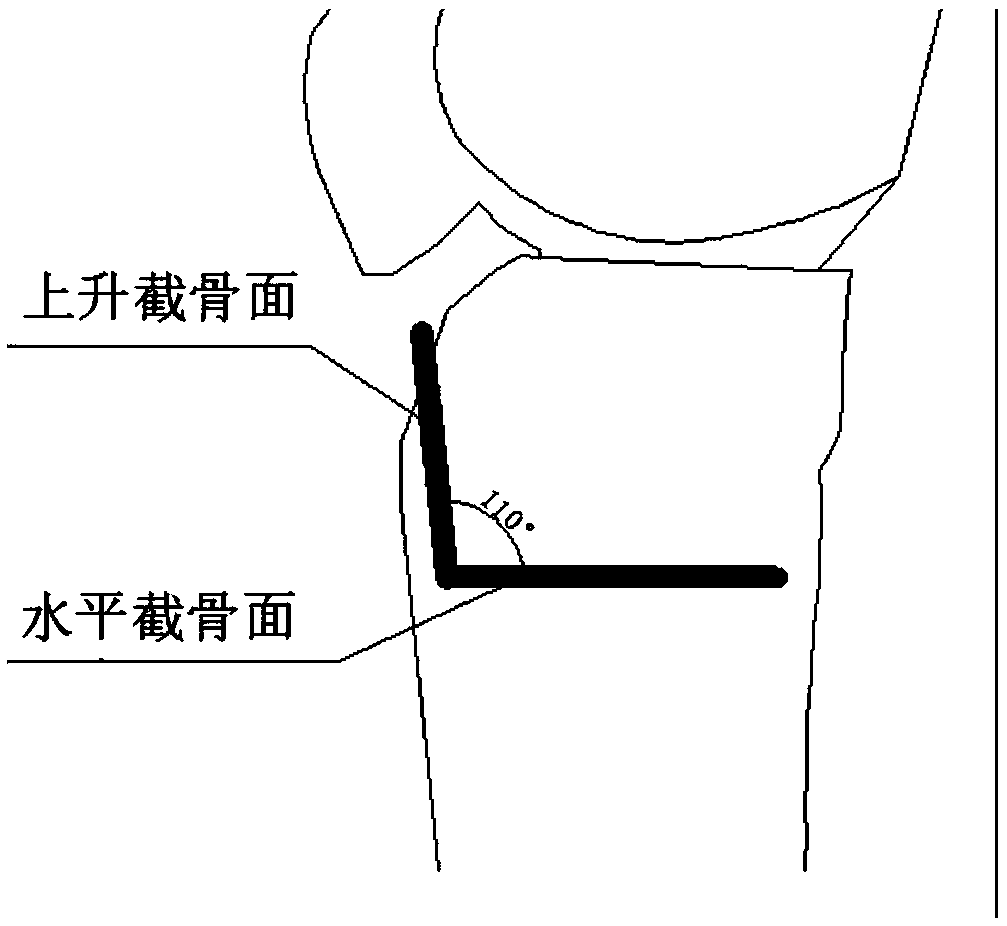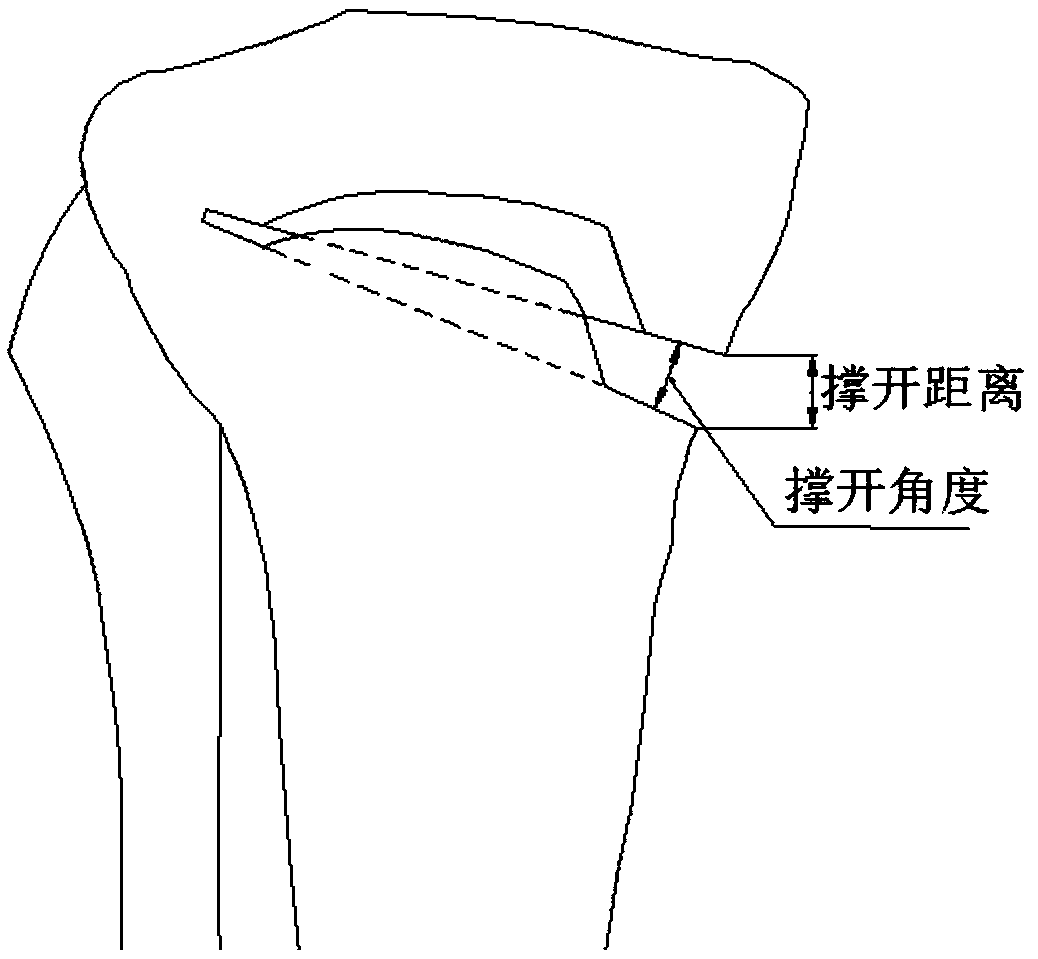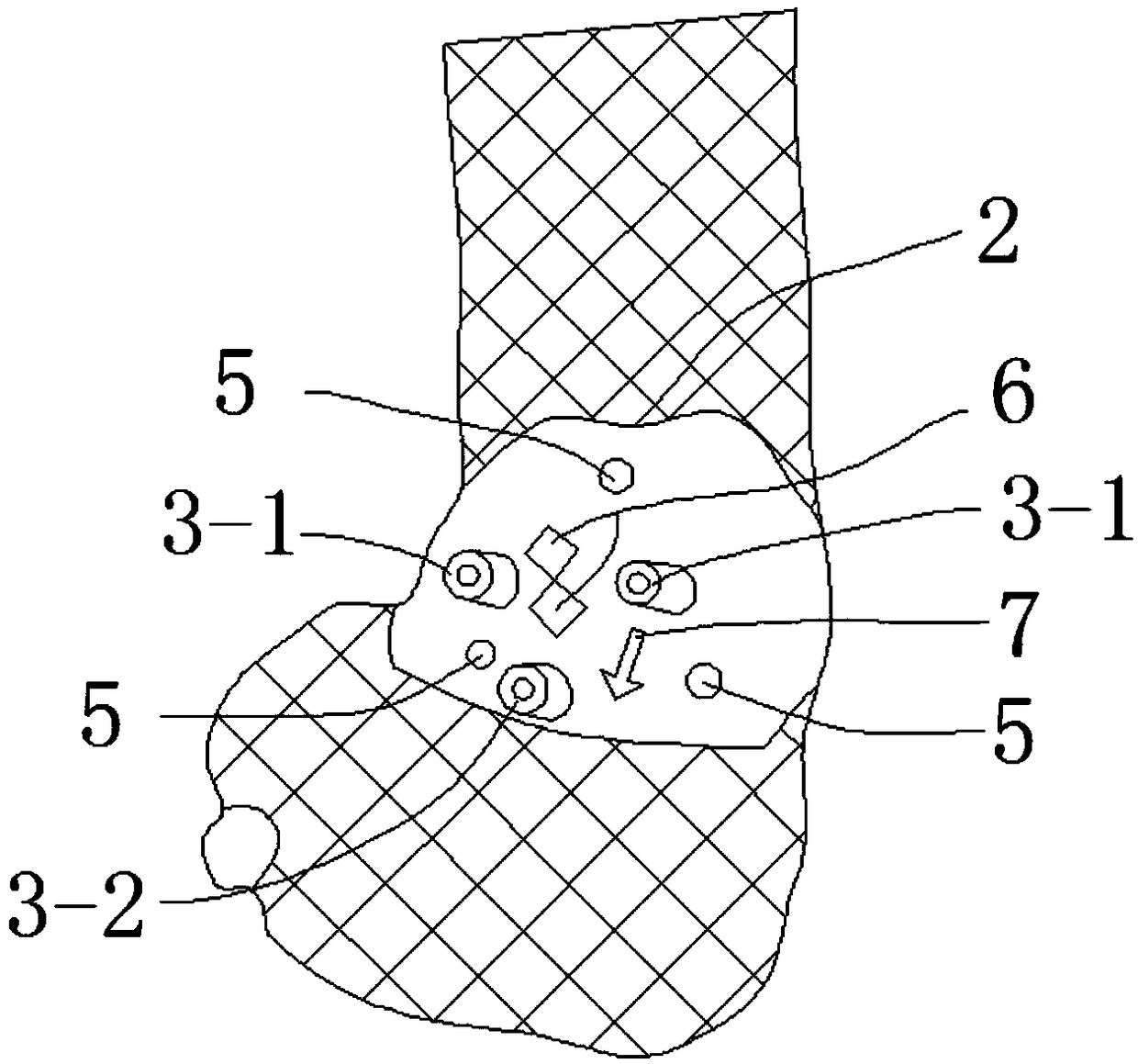Open-type wedge osteotomy device
An open, wedge-shaped technology, applied in the direction of internal bone synthesis, medical science, external plate, etc., can solve the problems of interference with surgical operations, low guiding accuracy, low stability, etc., to achieve convenient use, small size, and no attachment to the structure effect of things
- Summary
- Abstract
- Description
- Claims
- Application Information
AI Technical Summary
Problems solved by technology
Method used
Image
Examples
specific Embodiment approach 1
[0030] Specific implementation mode one: combine Figure 3 to Figure 4 Describe this embodiment, in this embodiment, the inner surface of the open wedge-shaped osteotomy device coincides with the bone surface of the operation area, the open wedge-shaped osteotomy device is provided with a positioning edge 2, and the outer surface of the open wedge-shaped osteotomy device is provided with a Kirschner Needle guide sleeve, angle mark hole 5 and two distraction position mark holes 6;
[0031] The number of Kirschner wire guide bushings is ≥ 3, of which at least 2 Kirschner wire guide bushes are guide holes 3-1, the centerlines of the guide holes 3-1 are in the same plane, and they are all perpendicular to the virtual axis; at least 1 of them The Kirschner wire guide sleeve is the positioning hole 3-2, and the positioning hole 3-2 is not on the connecting line of the guiding hole 3-1;
[0032] The two stretching position marking holes 6 are respectively located on both sides of th...
specific Embodiment approach 2
[0039] Specific embodiment two: the difference between this embodiment and specific embodiment one is: there are n positioning edges 2, n≥1; the closest positioning edge 2 to the joint is called the first positioning edge, and the first positioning edge is The edge of the articular surface (ie, the tibial plateau) is parallel, and the first positioning edge is 8-50 mm from the edge of the articular surface. Others are the same as the first embodiment.
[0040] In this embodiment, the distance from the first positioning margin to the other edge of the open wedge osteotomy device is 30-50 mm. When used for high tibial osteotomy, the distance from the first positioning edge to the tibial plateau should not be less than 10mm.
specific Embodiment approach 3
[0041] Specific embodiment 3: The difference between this embodiment and specific embodiments 1 or 2 is that: the outer surface of the open wedge-shaped osteotomy device is also provided with pointing signs 7 and / or explanatory text. Others are the same as the first or second embodiment.
[0042] The pointing mark 7 is an arrow-shaped mark, pointing to the palpable bone uplift point in or near the operation area; and it is not parallel to the first positioning side. The pointing mark 7 is depicted on the outer surface of the open wedge osteotomy device in the form of negative or positive. The depth of depression or the height of protrusion is 0.5-3 mm, and the total length of the arrow is not less than 10 mm. The angle between the pointing mark 7 and the first positioning side is 15°-45°.
[0043] When used for high tibial osteotomy, the explanatory text indicates the distance from the first positioning side to the tibial plateau. The explanatory text marks the brace distanc...
PUM
| Property | Measurement | Unit |
|---|---|---|
| Length | aaaaa | aaaaa |
| Wall thickness | aaaaa | aaaaa |
| Width | aaaaa | aaaaa |
Abstract
Description
Claims
Application Information
 Login to View More
Login to View More - R&D Engineer
- R&D Manager
- IP Professional
- Industry Leading Data Capabilities
- Powerful AI technology
- Patent DNA Extraction
Browse by: Latest US Patents, China's latest patents, Technical Efficacy Thesaurus, Application Domain, Technology Topic, Popular Technical Reports.
© 2024 PatSnap. All rights reserved.Legal|Privacy policy|Modern Slavery Act Transparency Statement|Sitemap|About US| Contact US: help@patsnap.com










